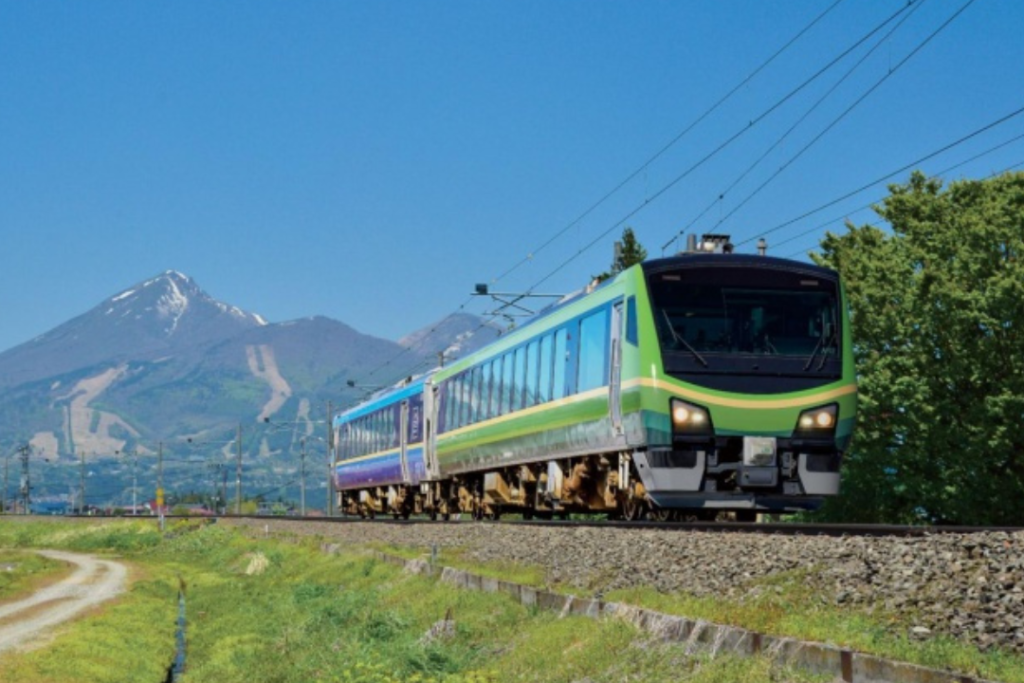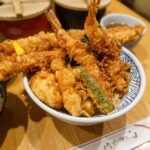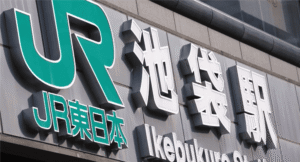Looking for a relaxing trip in Japan while enjoying stunning views? Try riding the “Aizu SATONO” sightseeing train!
This train will bring the beauty of Fukushima’s nature and local cuisine right to your doorstep.
You can also explore the history of samurai houses, enjoy the beauty of Lake Inawashiro, and taste Kitakata Ramen—one of Japan’s top three ramen styles. Let’s start your spring adventure in Tohoku now!
“Aizu SATONO” Sightseeing Train Focused on Fukushima
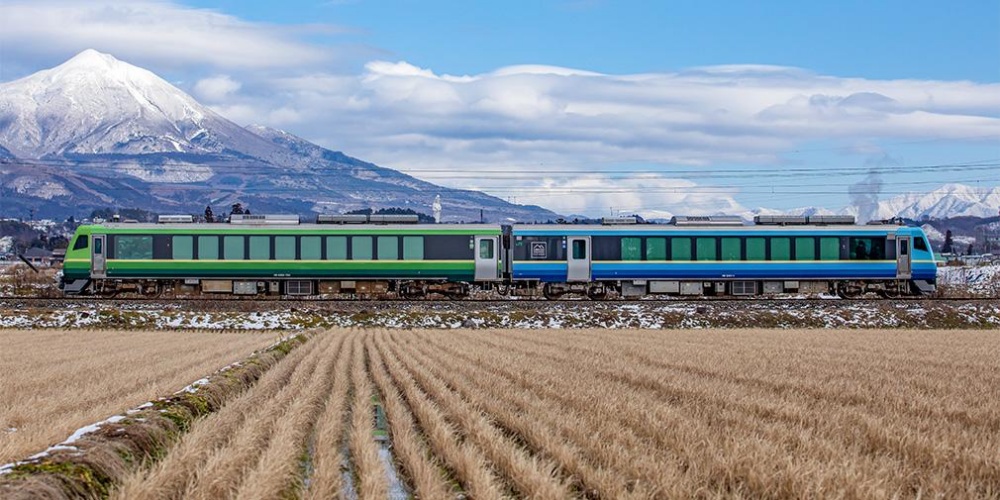
“SATONO” is a sightseeing train that travels through three southern Tohoku prefectures: Miyagi, Fukushima, and Yamagata.
This time, the spotlight is on “Aizu SATONO,” which operates along the route between Koriyama Station and Kitakata Station, known for its breathtaking scenery.
Train car number 1 of the “Aizu SATONO” is a green-colored car, with light green and dark green exteriors symbolizing the mountains and fertile fields.
Inside, there are 25 seats, mostly cabin-style with dining tables.
Before boarding, you can order a bento and local sake through the “Uketorippu (うけとりっぷ)” system.
While enjoying the views along the way, you can also taste various local dishes and traditional foods from southern Tohoku.
Train Car No. 2 “Aizu SATONO”: A Blend of Sky and Sea in a Single Journey
Car number 2 stands out with a stunning mix of light and dark blue, inspired by the vast sky and deep ocean. Inside, you’ll find comfortable reclining seats that you can adjust to your liking.
Large windows create an open, airy feel and let you relax while soaking in the breathtaking scenery along the way.
The interior is decorated with local icons like the legendary red cow Akabeko, the resilient Okikogashi dolls, and traditional Aizu Momen fabrics.
A distinct SATONO scent greets every passenger, adding a warm, cultural touch that reflects the spirit of Fukushima.
Read:
5 Recommended Travel Itineraries in Ibaraki by Season
Exploring the Route of “Aizu SATONO”
Riding the “Aizu SATONO” isn’t just about enjoying the views of the Ban-etsu West Line.
Between Koriyama Station and Kitakata Station, you’ll find plenty of exciting spots worth visiting.
So don’t just sit there—make time to hop off and explore! Whether you love history, nature, or just want a relaxing stroll, there’s a little adventure waiting for you.
Lake Inawashiro: Stay by Tohoku’s ‘Blue Gem’
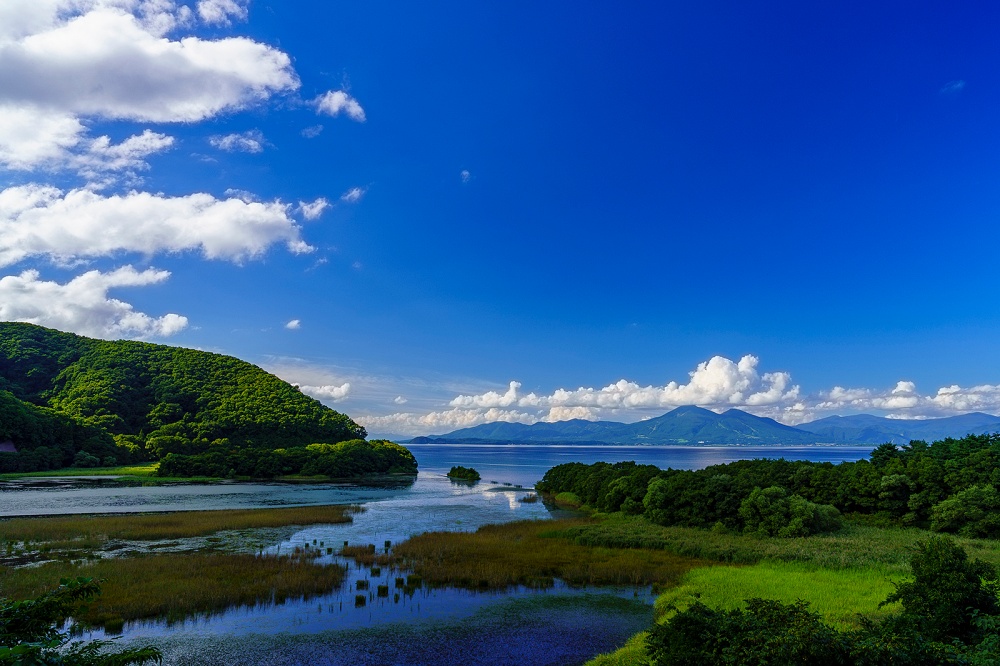
Lake Inawashiro is Japan’s fourth-largest lake and is famous for its crystal-clear waters, earning it the nickname “The Blue Gem of Tohoku.”
From here, you can admire the majestic view of Mount Bandai. The mix of lake and mountains looks like a scene straight out of a painting.
If you want more time to enjoy the view, consider staying overnight nearby.
Many inns offer rooms with lake views, and some even have special spots to catch the sunrise over the water—an unforgettable moment you won’t want to miss.
Tsuruga Castle (Aizu Wakamatsu Castle): A Stylish Fortress Steeped in Battle History

Tsuruga Castle, also known as Aizu-Wakamatsu Castle, is one of the most iconic landmarks in the Tohoku region.
Unlike most Japanese castles, this one stands out with its striking red roof and white walls, creating a bold visual contrast.
Though it was once destroyed during war, the castle has been beautifully reconstructed and now serves as a key site that showcases Aizu’s rich history and culture.
In spring, cherry blossoms surround the castle, while in autumn, the maple trees blaze red, adding a touch of romance and elegance to the scene.
History lovers will enjoy exploring the Aizu clan exhibits inside, complete with samurai armor and ancient weapons—guaranteed to spark curiosity and deepen your knowledge.
Aizu Bukeyashiki: The Samurai Residence
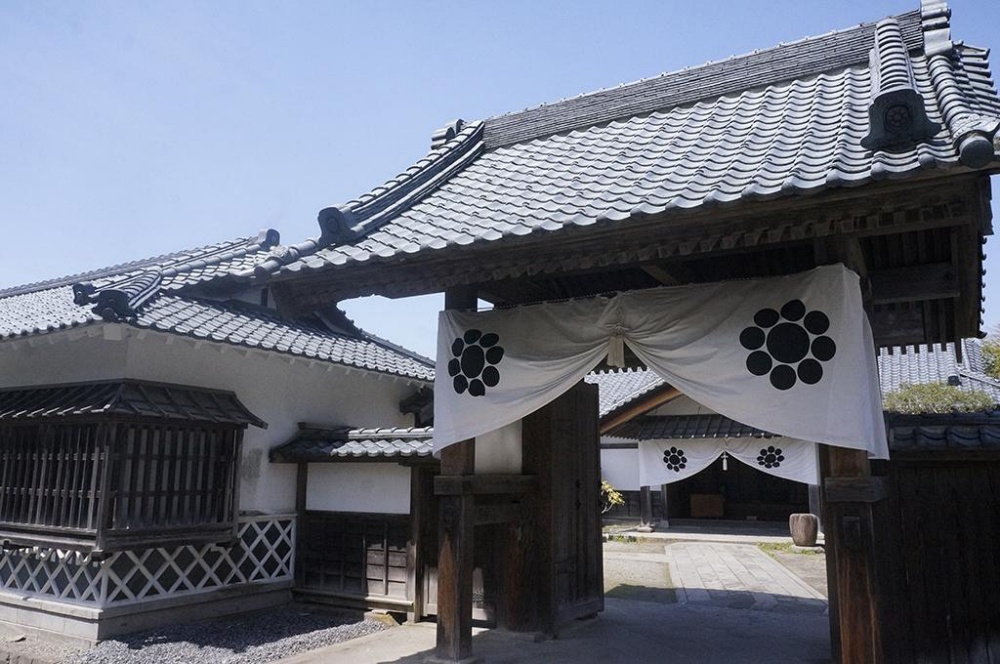
Curious about what life was like for samurai during the Edo period? Visit Aizu Bukeyashiki!
This well-preserved samurai residence complex includes the main house, storage buildings, tea rooms, and more.
You’ll get a close-up look at traditional samurai lifestyle, family customs, and even original household items from the era.
Walking through the historic buildings feels like stepping back in time and becoming part of a living story.
It’s also a photogenic spot—who knows, maybe you’ll capture a magical moment right here!
Nicchu Railway Line Memorial Cycling and Pedestrian Road

If you’re a cherry blossom fanatic—or you’ve always dreamed of seeing them in person—this spot absolutely deserves a place on your travel list!
Stretching about 3 kilometers, the “Nicchu Line Memorial Cycling and Pedestrian Road” used to be part of the old Nichu Railway Line, which shut down in 1984.
Today, it’s been transformed into a perfect path for walking or cycling.
Around 1,000 shidare-zakura (weeping cherry trees) line the road, creating a breathtaking sight in spring.
Their cascading branches form a pink tunnel that looks like something out of a dream.
When a gentle breeze blows, petals float through the air like sakura rain—just like a scene from a romantic movie, only this time, you’re living it for real.
For an even more memorable experience, try cycling slowly down the path with cherry blossoms blooming on both sides. It’s the kind of spring memory you won’t forget.
Savor the Flavors of Fukushima!
Beyond the delicious meals served aboard the “Aizu SATONO” sightseeing train, the southern Tohoku region is home to many local dishes that you simply have to try.
Take a break from your journey and treat your taste buds to the region’s unique culinary delights!
The Legendary Kitakata Ramen from Fukushima
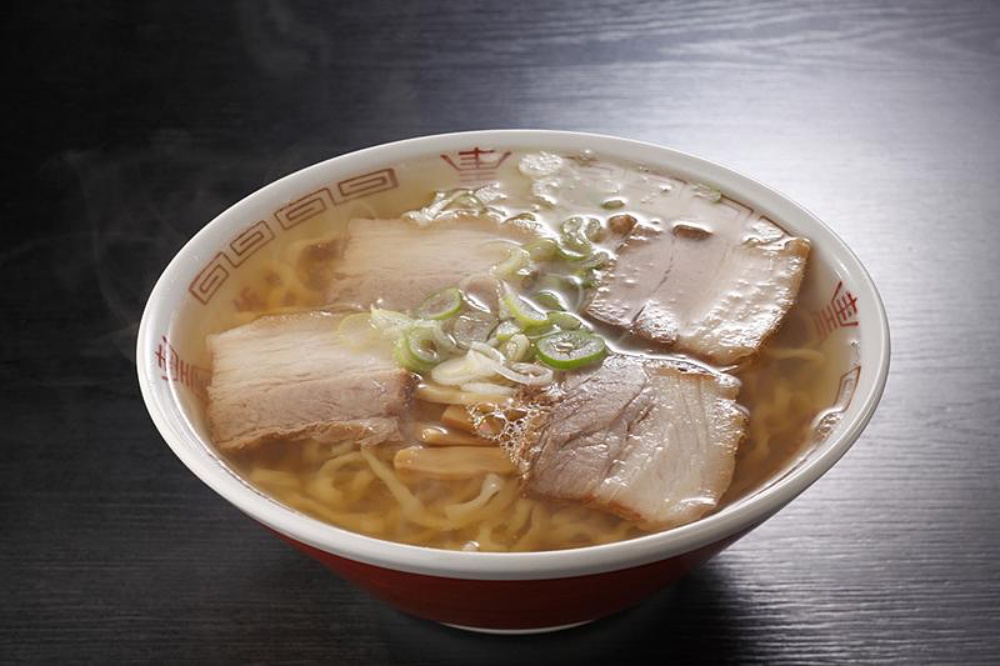
No conversation about Fukushima food is complete without mentioning Kitakata Ramen.
It’s one of Japan’s “Big Three” ramen styles, alongside Sapporo and Hakata ramen, and it definitely holds its own.
Kitakata Ramen is known for its thick, curly noodles called Hirauchi Jukusei Takasuimen. These high-moisture noodles are chewy and soak up the broth beautifully.
The soy sauce-based soup is light but rich in flavor, often made with dried sardines (niboshi) and pork bones for depth.
Each ramen shop in Kitakata brings its own twist to the classic recipe, making every bowl a new discovery.
With over 120 ramen restaurants in the city, Kitakata is a must-visit destination for ramen lovers from across Japan.
Wappa Meshi at Takino
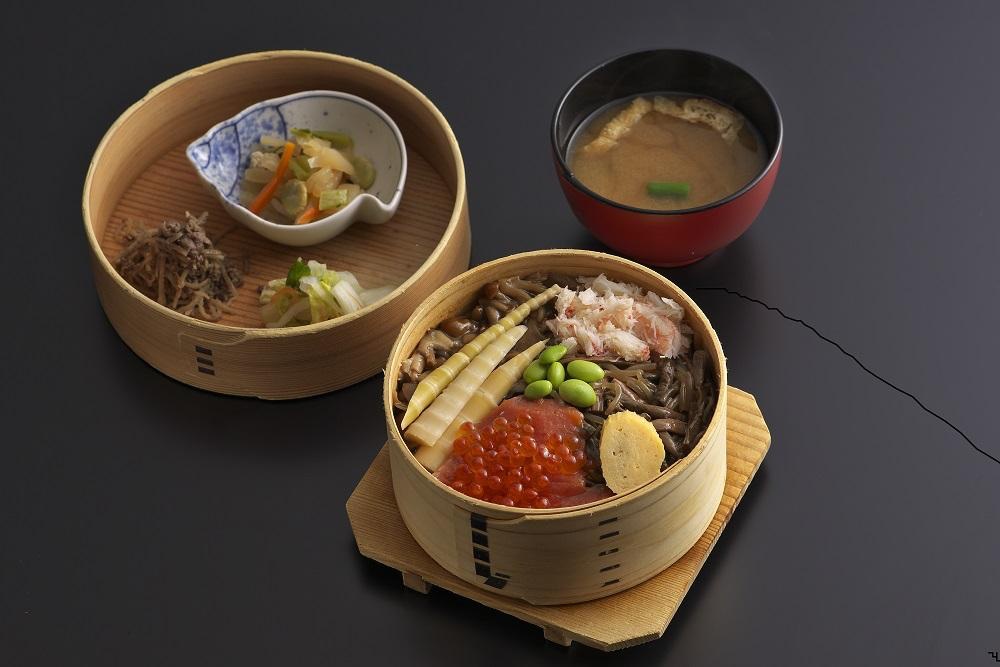
To taste the traditional flavors of Aizu, head to Takino restaurant and try their signature dish: Wappa Meshi.
This dish features rice cooked with various local ingredients in a curved cedar wood container called a wappa.
The cooking method not only preserves the natural aroma of each ingredient but also infuses the dish with the soft, earthy fragrance of cedar wood.
Takino, the pioneer of Wappa Meshi, uses Aizu-grown rice and a variety of toppings such as salmon, eggs, and seasonal vegetables.
The wooden container keeps the dish warm while adding an authentic and beautifully presented culinary experience.
Aizu Sake: A 300-Year Cultural Legacy
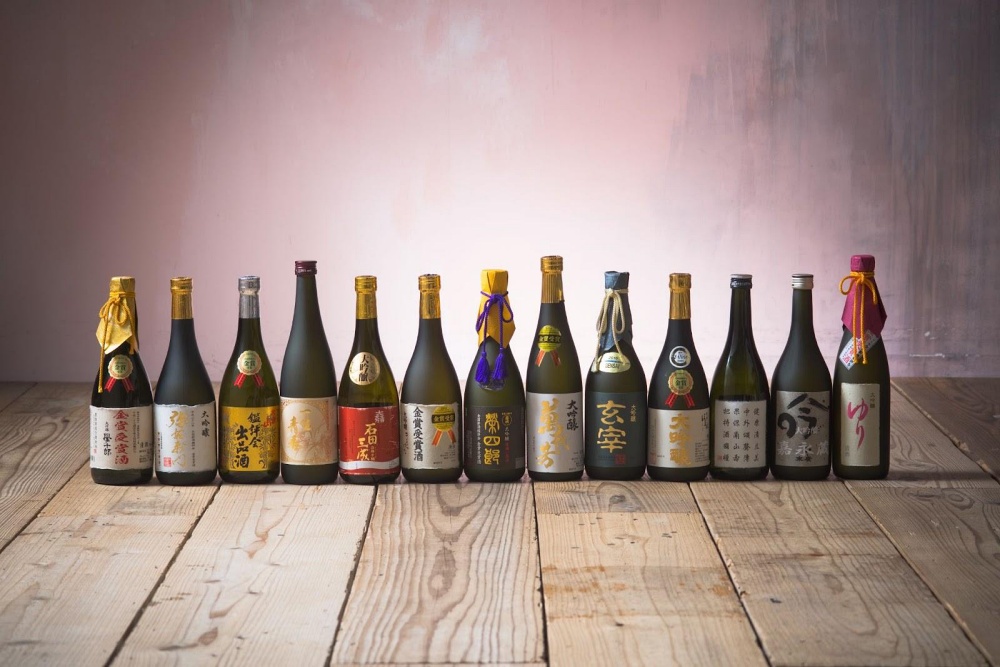
The Aizu region has been brewing sake for over 300 years.
One of the most renowned producers, Niida Honke in Kōriyama, has been in operation since 1711 and is known for its dedication to natural ingredients and traditional techniques.
Aizu sake is celebrated for its smooth and slightly sweet taste, making it a favorite among many sake lovers, including women.
The variety is impressive—ranging from light and dry to rich and sweet—to suit different palates.
By savoring Kitakata Ramen, Wappa Meshi at Takino, and Aizu sake, you’ll discover the rich, authentic flavors and culture that make Fukushima truly special.

